What is 1st order homogenous differential equation?The ODE is homogeneous ODE of order one This is because the coefficients of dx and dy are both homogeneous two variables functions of the same order I suggest you write the ODE as y′ = 32t2t2−t−2 = f (t), (x = 0,t = y/x) Find the solution of (xy^22x^2y^3)dx (x^2yx^3y^2)dy=0 Find the solution of (xy2 2x2y3)dx (x2y −x3y2Given, (x 2y 2)dx−2xydy=0 ⇒(x 2y 2)dx=2xydy ⇒ dxdy= 2xyx 2y 2 (i) Let y=vx Thus, dxdy=vx dxdv Thus, vx dxdv= 2x(vx)x 2(vx) 2 ⇒vx dxdv= 2v1v 2 ⇒x dxdv= 2v1v 2−v

Solve The Differential Equation X2 Y2 Dx 2xydy 0 Given Y 0 X 1 Maths Differential Equations Meritnation Com
(1+y^2+xy^2)dx+(x^2y+y+2xy)dy=0
(1+y^2+xy^2)dx+(x^2y+y+2xy)dy=0- This is my attempt tex\frac{dy}{dx} = \frac{y^2 1}{x^2 1} \\ \int \frac{dy}{y^2 1} = \int \frac{dx}{x^2 1} \\ \ln \left \frac{y1}{y1} \right C_1Answer and Explanation 1 First, we rewrite the differential equation so that we can see that it is a homogeneous equation 3(3x2y2) dx−2xy dy = 0 2xy dy = 9x2 3y2 dx dy dx = 1 2(9 x y 3 y x




Find The Particular Solution Of The Differentialequation 1 Y 2 1 Log X Dx 2xy Dy 0 Giventhat Y 0 When X 1 Snapsolve
Integrate both side Put the values of v which you let in point 2 and you will get your answer Now lets do the math Given that (x^2 y^2)dx 2xy dy =0 dy/dx= (x^2 y^2)/ 2xy ( Homogenous) 1 f (x,y)= (x^2 y^2)/2xy, f ( kx,ky) = { (kx)^2 (ky^2)}/ 2Not Linear due to $n \ne 1$ Exact Differential Equation Not EqualThe solution of the differential equation (x 2 y 2) dx 2xy dy = 0 is The solution of the differential equation (x 2 y 2 ) dx 2xy dy = 0 is 1) x2 y2 = Cy 2) C (x2 – y2) = x 3) x2 – y2 = Cy
Transcribed image text Find the general solution of the following equation (x^2 y^2 1)dx 2xydy = 0 by finding an integrating factor mu = phi (y^2 x^2)Show to solve this homogenous 1st orderdifferential equation (x^2y^2)dx2xy dy=0 and i want to understand the basic how can i apply homogenious 1st order differential equation term on this math because i am new with this homogenous 1st orderdifferential equationThanks in advanceQ A region is bounded by the curve y = √2 and the lines y=x and the xaxis The integral expression A We have to find the integral expression for the area of the region bounded by the curves y=2x and
Solve the differential equation (x²y²)dx(2xy)dy=0 ((x squared plus y squared)dx plus (2xy)dy equally 0) various methods for solving and various orders The GS is y^2 = (A x^4)/(2x^2) Or, alternatively y = sqrt(A x^4)/(sqrt(2)x) We have (x^2 y^2) \\ dx xy \\ dy = 0 Which we can write in standard form as dy/dx = (x^2 y^2)/(xy) 1 Which is a nonseparable First Order Ordinary Differential Equation A suggestive substitution would be to perform a substitution of the form y = xv => dy/dx = v xv' \\ \\ \\ where Solve the following differential equation (x^2 y^2 ) dx 2xy dy = 0 given that y = 1 when x = 1 Sarthaks eConnect Largest Online Education Community
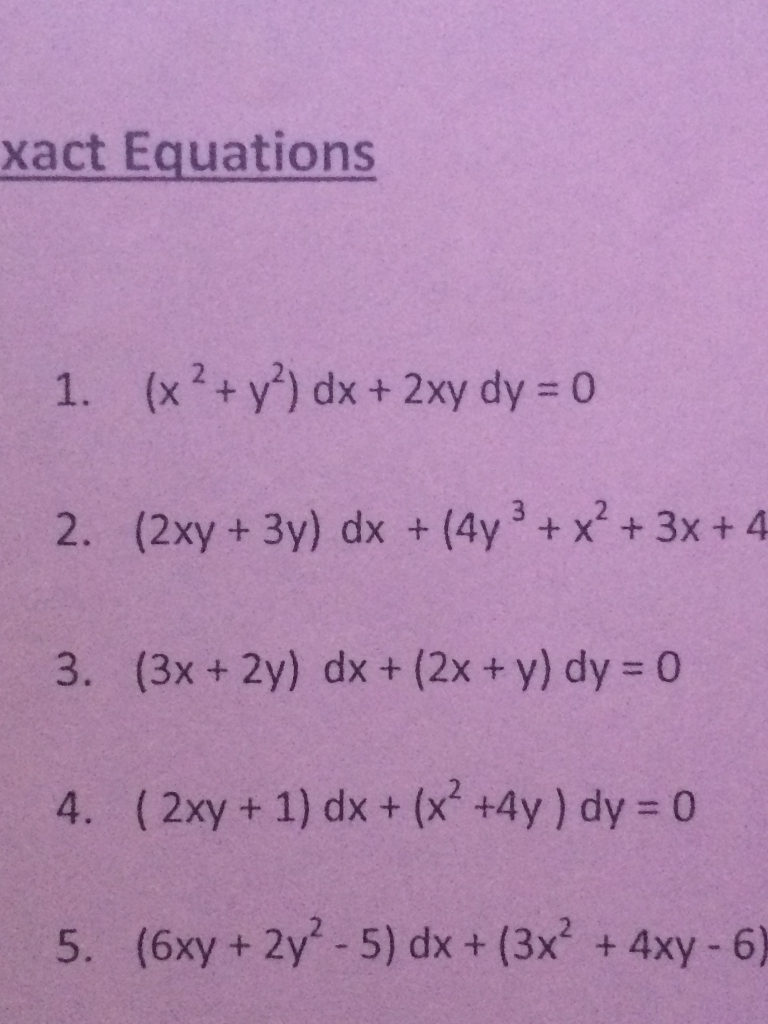



Solved Xact Equations 1 X2 Y2 Dx 2xy Dy 0 2 2xy 3y Chegg Com




Solve The Differential Equation X2 Y2 Dx 2xydy 0 Given Y 0 X 1 Maths Differential Equations Meritnation Com
Q Find the particular solution for (2y x) dx 3xy2 dy = 0 when x = 1, y = 1 A Click to see the answer Q Find the particular solution for (2y3 – x³) dx 3xy² dy = 0 when x = 1, y = 1Dy / dx = f (y) Solve dy / dx = sin^2y Formation Of Differential Equations Form the differential equation of the family of curves represented c (y c)^2 = x^3 , where c is a parameter Find the differential equation that represents the family of all parabolas having` (x^(2)y^(2)) dx 2xy dy = 0`




Solve The Following Differential Equations X 2 Y 2 Dx 2xydy 0 Y 1 0 Snapsolve
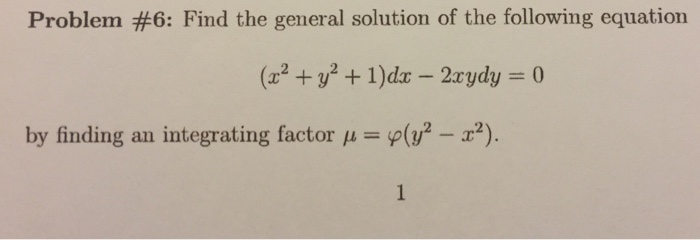



Solved Find The General Solution Of The Following Equation Chegg Com
2 x y d y − ( x 2 − y 2 1) d x = 0 Multiply y and y to get y^ {2} Multiply y and y to get y 2 2xy^ {2}d\left (x^ {2}y^ {2}1\right)dx=0 2 x y 2 d − ( x 2 − y 2 1) d x = 0 Use the distributive property to multiply x^ {2}y^ {2}1 by d Use the distributive property to multiply x 2 − y 2 1 by d(2xy 3y^2)dx (2xy x^2)dy = 0 Natural Language;Learn how to solve differential equations problems step by step online Solve the differential equation xydx(1x^2)dy=0 Grouping the terms of the differential equation Group the terms of the differential equation Move the terms of the y variable to the left side, and the terms of the x variable to the right side of the equality Simplify the expression \\frac{1}{y}dy Simplify the
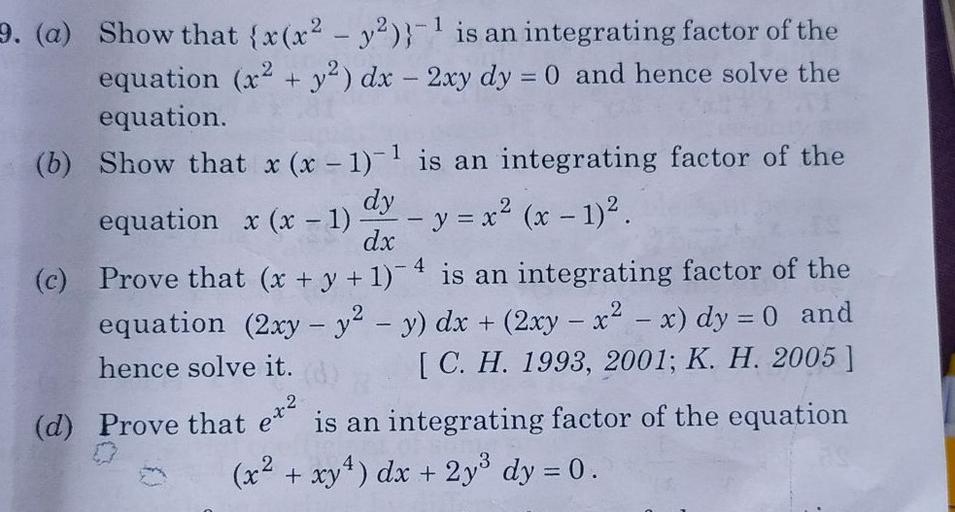



9 A Show That X X2 Y2 1 Is An Integrating Fac Math




Differential Equation 1st Order Sol 3 Of 10 Exact Differentials Ex 1 Y 2dx 2xydy 0 A X Y Youtube
(x 2 y 2)dx 2xy dy = 0 ∴ 2xy dy = (x 2 y 2)dx ∴ `"dy"/"dx" = ("x"^2 "y"^2)/ "2xy"` (1) put y = vx ∴ `"dy"/"dx" = "v x" "dv"/"dx"` ∴ (1Enter the email address you signed up with and we'll email you a reset linkSolve this homogenous differential equation (x^2y^2)dx2xy dy=0 find the general solution of the following differential equation y^(5)(1/x)y^(4)=0 use the euler method with h=02 to solve each IVP on 0



Solved Solve The Following Differential Equations 1 X Y 3 Dx Course Hero



Solve The Following Differential Equation X 2 Y 2 Dx 2xy Dy 0 Sarthaks Econnect Largest Online Education Community
Transcript Ex 95, 4 show that the given differential equation is homogeneous and solve each of them ( ^2 ^2 ) 2 =0 Step 1 Find / ( ^2 ^2 ) 2 =0 2xy dy = ( ^2 ^2 ) dx 2xy dy = ( ^2 ^2 ) dx / = ( ^2 ^2)/2 Step 2 Putting F(x, y) = / and findingFree math problem solver answers your algebra, geometry, trigonometry, calculus, and statistics homework questions with stepbystep explanations, just like a math tutorSolve the following differential equation (x^2 y^2) dx – 2xy dy = 0 asked in Differential Equations by Amayra (314k points) differential equations;




In The Following Show That The Given Differential Equation Is Homogeneous And Solve Each Of Them 1 X 2 Xy Dy X 2 Y 2 Dx 2 Y X Yx



Find The Particular Solution Of The Differential Equation 1 Y 2 1 Log X Dx 2xy Dy 0 Given That Y 0 When X 1 Sarthaks Econnect Largest Online Education Community
Compute answers using Wolfram's breakthrough technology & knowledgebase, relied on by millions of students & professionals For math, science, nutrition, historyFree PreAlgebra, Algebra, Trigonometry, Calculus, Geometry, Statistics and Chemistry calculators stepbystepCalculus Examples Popular Problems Calculus Find dy/dx x^2xyy^2=1 x2 − xy y2 = 1 x 2 x y y 2 = 1 Differentiate both sides of the equation d dx (x2 −xy y2) = d dx (1) d d x ( x 2 x y y 2) = d d x ( 1) Differentiate the left side of the equation Tap for more steps




Engineering Mathematics Notes




Answered In Problems 31 36 Solve The Given Bartleby
Solve $(x^2 y^2)dx 2xydy = 0$ The answer is $x^2 y^2 = Cx$ I've tried the following methods but I'm not getting the answer Variable Separable (n/a) Homogenous Differential Equation (Coefficients not of degree 1) Linear Differential Equation; Answer> (x² y²) = cx Given> ( x² y² ) dx 2xy dy = 0 To find> Solve given differential equation Solution> ATQ, ( x² y² ) dx 2xy dy = 0 => 2xy dy = ( x² y² ) dx => dy / dx = ( x² y² ) / 2xy ( 1 ) This is a homogenous given differential equation So ,Extended Keyboard Examples Upload Random Compute answers using Wolfram's breakthrough technology & knowledgebase, relied on by millions of students & professionals For math, science, nutrition, history, geography, engineering, mathematics, linguistics, sports, finance, music




X 2 Y 2 Dx Xydy 0 Novocom Top
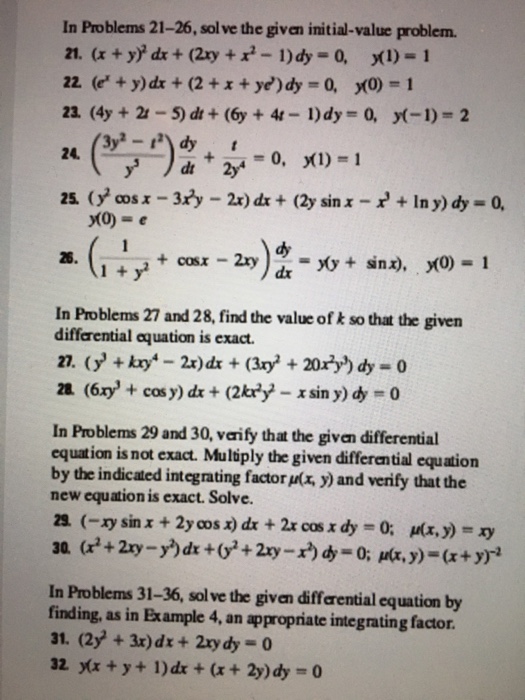



Solved In Solve The Given Initial Value Problem X Y 2 Chegg Com
0 votes 1 answer In differential equation show that it is homogeneous and solve it dy/dx = 2xy/(x^2 y^2)Solve the following differential equation (x2 y2)dx 2xy dy = 0 Mathematics and StatisticsGeneral solution of (x 2 y 2 ) dx 2xydy = 0 is y 2 x 2 = cx 2 x 2 y 2 = cx x 2 = cx (x 2 y 2) None of above




Solution Of The Differential Equation X 2 Y 2 Dx 2xy Dy 0 Is Youtube



Solved Test Exactness And Solve Question 1 2xy 3x 2 Dx X 2 2y Dy 0 Question 2 Cosx Xsinx Y 2 Dx 2xydy 0 Question 3 2xydx X 2 Course Hero
y = (xlnx)/(1lnx) We have dy/dx = (x^2y^2xy)/x^2 with y(1)=0 Which is a First Order Nonlinear Ordinary Differential Equation Let us attempt a substitution of the form y = vx Differentiating wrt x and applying the product rule, we get dy/dx = v x(dv)/dx Substituting into the initial ODE we get v x(dv)/dx = (x^2(vx)^2x(vx))/x^2Find stepbystep Differential equations solutions and your answer to the following textbook question Identity the type of ODE and then solve 1) dy/dx = (x2y – y)/(y1) y(0) = 1 2) dy/dx = (x2 – y)/x 3) (x2 y2 x) dx xy dy = 0 4) dy/dx = y/x y2/x2 with y(1) = 1N = (2xy x 2 − 2) For a differential equation to be an exact differential equation, we need condition M y = N x M y = 2 (x y) N x = 2y 2x = 2 (x y) So, the given equation is an exact differential equation We are looking for the solution of the form Ψ (x, y) = C dΨ = Ψ x dx Ψ y dy = 0 ⇒Ψ x = (x y) 2 and Ψ y = (2xy x 2




15 The Differential Equation 2xy Dy X2 Y2 1 Dx Determines A A Family Of Circles With Centre On X Axis B A Family Of Circles With Centre On Y Axis



1
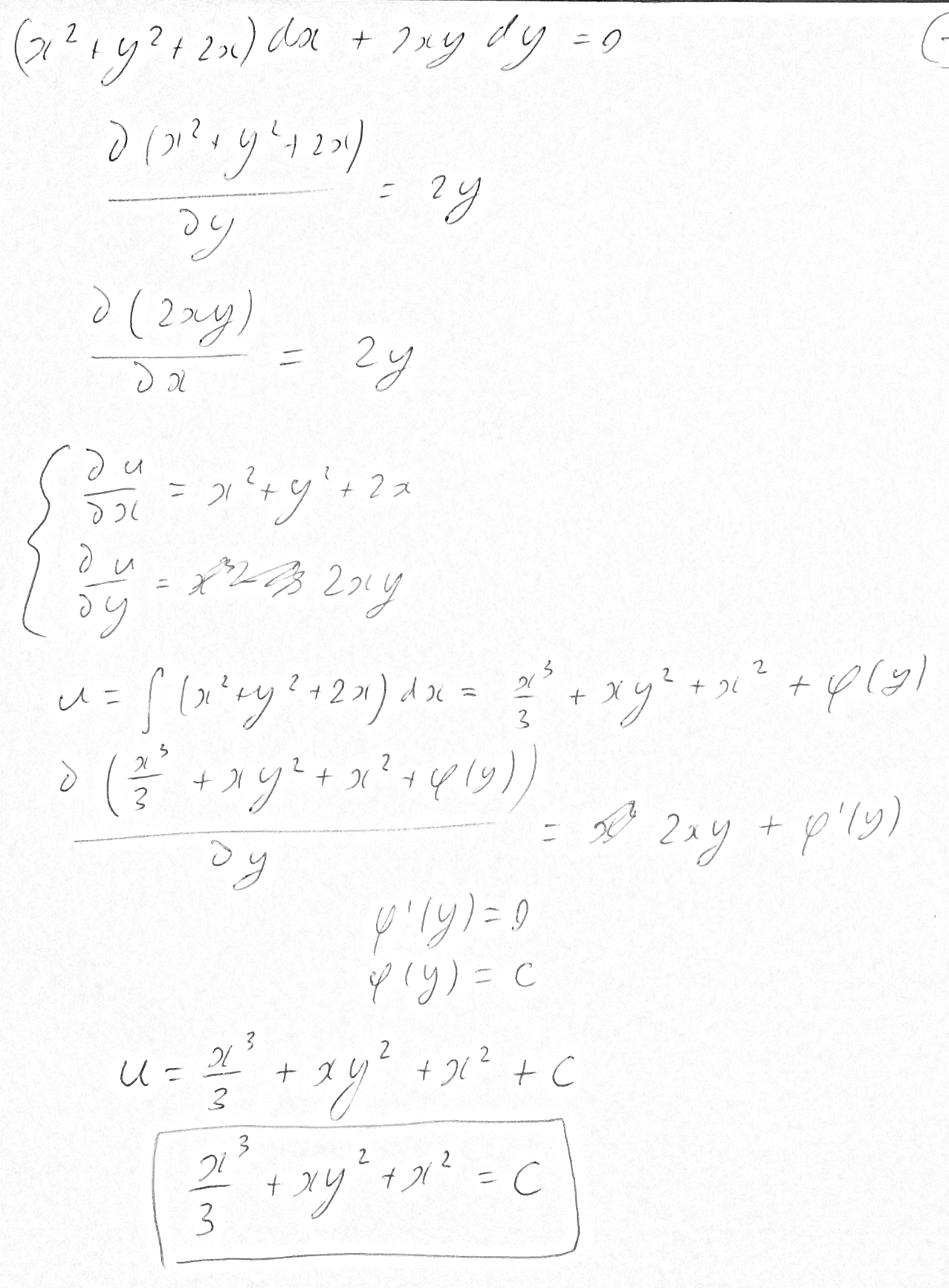



X 2 Y 2 2x Dx 2xydy 0 Reshit Differencialnoe Uravnenie
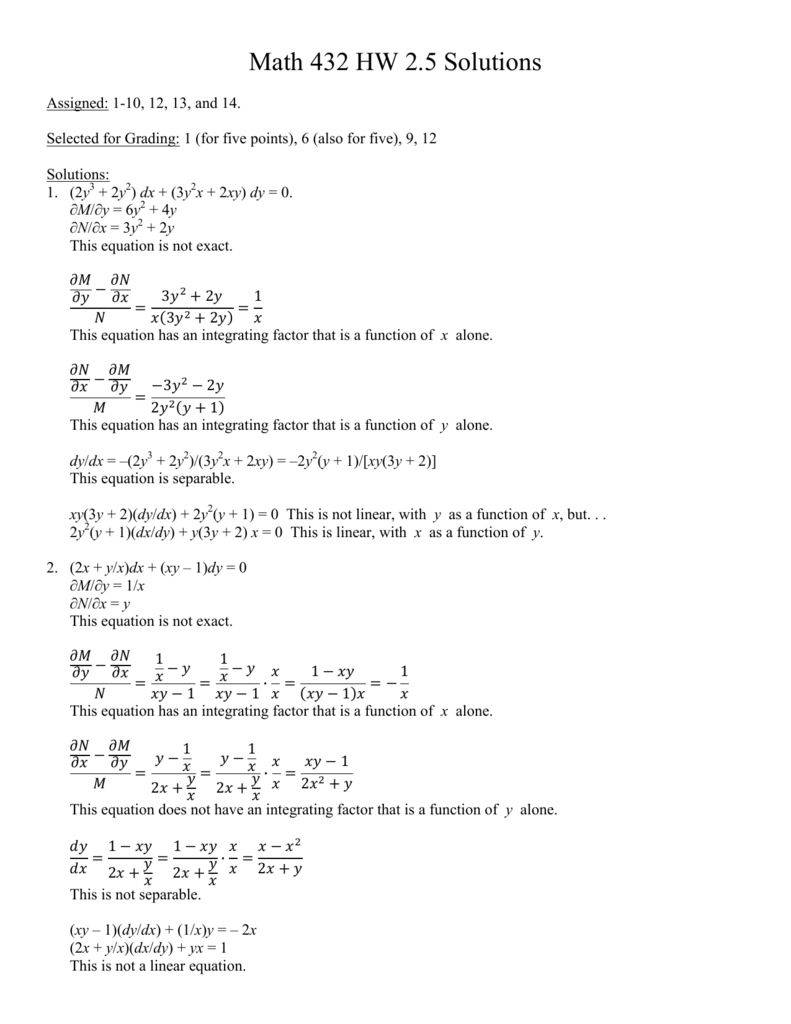



Math 432 Hw 2 5 Solutions




Solve The Differential Equation X 2 Y 2 Dx 2xydy 0




X 2 Y 2 Dx Xydy 0 Novocom Top
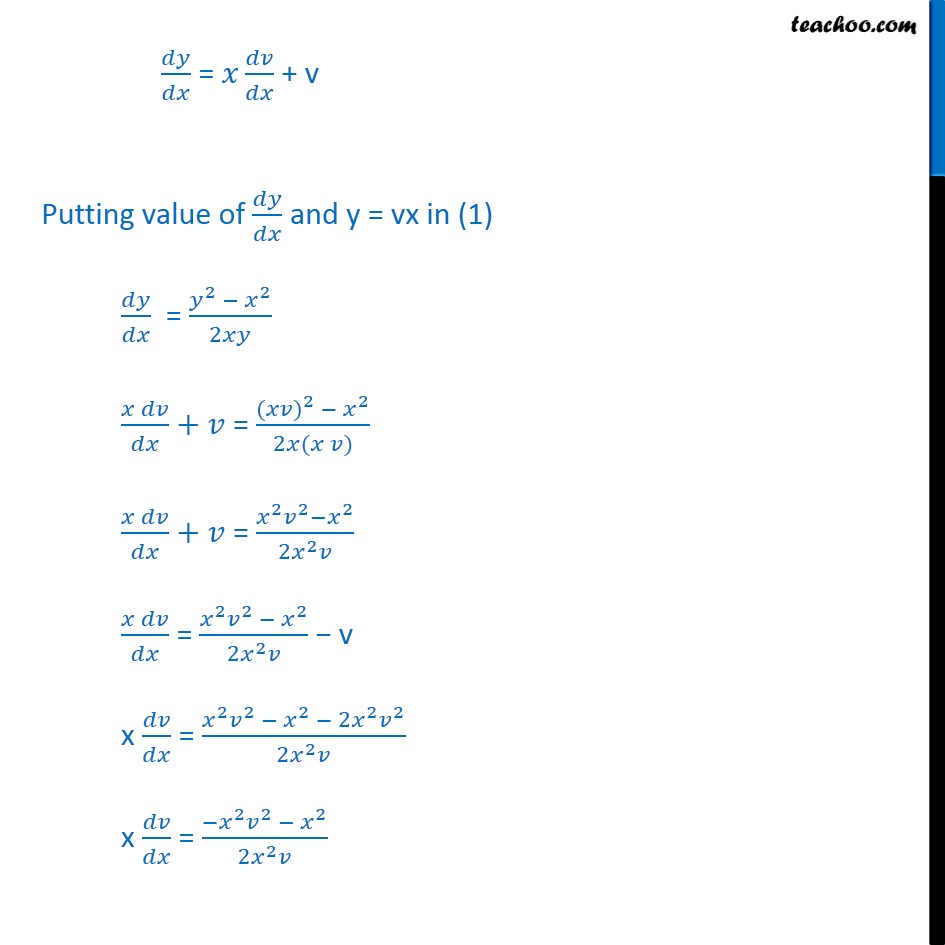



Ex 9 5 4 Show Homogeneous X2 Y2 Dx 2xy Dy 0 Ex 9 5




Unit 03 Differential Equations Pdf Logical Truth Equations




X 2 Y 2 Dx Xydy 0 Novocom Top



Solve The Following Differential Equation X 2 Y 2 Dx 2xy Dy 0 Given That Y 1 When X 1 Sarthaks Econnect Largest Online Education Community




X2 Y2 Dx 2xydy 0 Brainly In
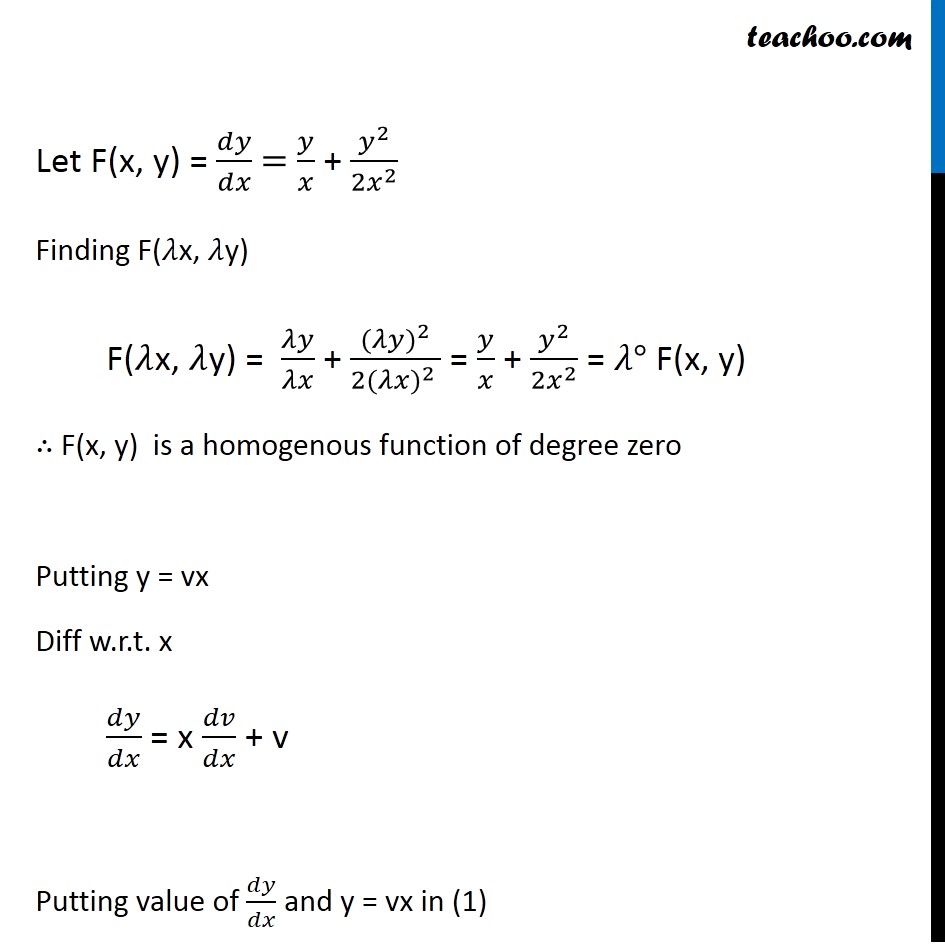



Ex 9 5 15 Class 12 Find Solution 2xy Y 2 2x 2 Dy Dx 0 When



How To Show That The Differential Equation X Y Dx 2xydy 0 Is Exact And Hence Solved Quora



Show That The Given Differential Equation Is Homogeneous X 2 Y 2 Dx 2xy Dy 0 Sarthaks Econnect Largest Online Education Community



X 2 Y 2 Dx 2xy Dy 0 Sarthaks Econnect Largest Online Education Community




Solve The Differential Equation X 2 Y 2 Dx 2xydy 0 Youtube




X 2 Y 2 Dx 2xy Dy 0 The Solution To This Differential Equation Represents Which Curve
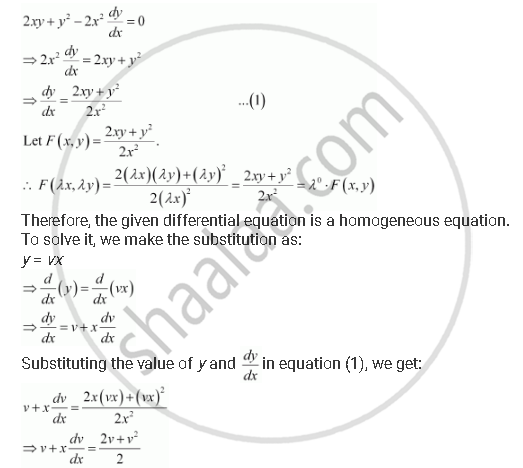



For The Differential Equations Find The Particular Solution Satisfying The Given Condition 2xy Y 2 2x 2 Dy Dx 0 Y 2 When X 1 Mathematics Shaalaa Com



Solve X 2 Y 2 Dx 2xy Dy 0 Sarthaks Econnect Largest Online Education Community




The Curve Satisfying The Differential Equation X 2 Y 2 Dx 2xy Dy 0 And Passingthrough The Point 1 1 Is Jee Main 18 1 A Hyperbola 2 A Circle Of Radius Two 3 A Circle Of Radius One4 An



What Is The Solution To The Following Differential Equation X 2 Y 2 Dx 2xydy 0 Quora



How To Solve The Differential Equation X Y Dx Y 2xy X Dy 0 Quora




Misc 7 Show That General Solution Is X Y 1 A 1 X Y 2xy




How To Find The Solution To The Equation Math X 2 Y 2 2x Dx 2ydy 0 Math That Satisfies Math Y 0 1 Math Quora
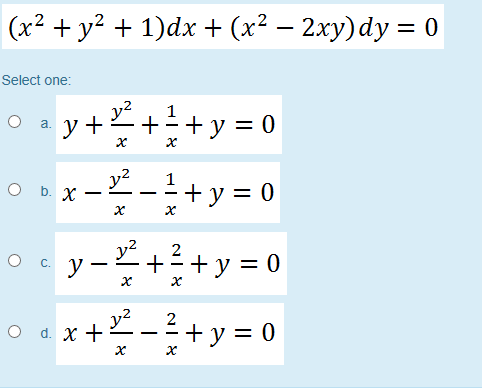



Solved X2 Y2 1 Dx X2 2xy Dy 0 Select One 2 1 A Chegg Com



Solve The Following Differential Equation X2 Y2 Dx 2xy Dy 0 Given That Y 1 When X 1 Or Solve The Following Differential Equation If Y 1 When X 1 Maths Topperlearning Com 237hoo




Engineering Mathematics Notes




21 X Y 2 Dx 2xy X 2 1 Dy 0 Y 1 1 Ecuaciones Exactas Alexander Estrada Youtube



Solve The Following Differential Equation X2 Y2 Dx 2xy Dy 0 Given That Y 1 When X 1 Or Solve The Following Differential Equation If Y 1 When X 1 Maths Topperlearning Com 237hoo



Differential Equations



How To Solve This Differential Equation 2xydy X 2 Y 2 1 Dx 0 Quora




Engineering Mathematics Notes




Solve The Following Differential Equations 1 5 2 X 2 Y 2 Dx 2xydy 0 Given Y T And X 1 Snapsolve



Solved Please See An Attachment For Details Course Hero
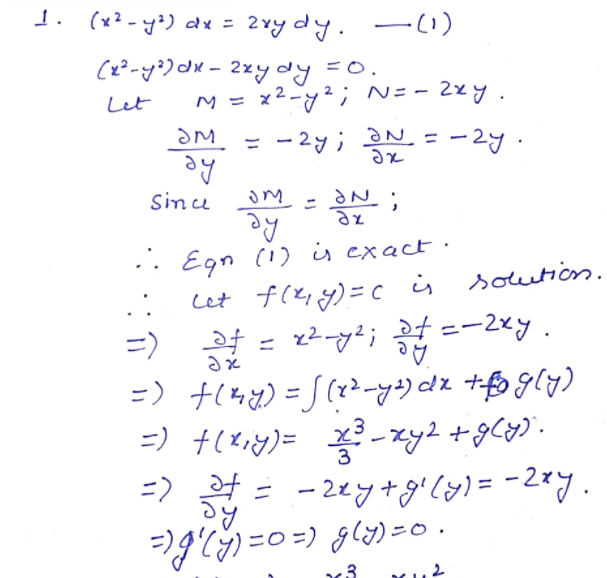



Solve The Following Differential Equations 1 X2 Y2 Dx 2xy Dy 3 Xly Dx 2 Y2 Dy 0 V T U 10 6 Y2 X2 Dx Xy Day Wegglab




Nonexact De Made Exact 2y 2 9x Dx 2xydy 0 Youtube




Solution Of Differential Equation X 2 2x 2y 2 Dx 2xy Dy 0 Is A Y 2 2x Frac 1 4 X 2 Frac C X 2 B Y 2 Frac 2 3 X X 2 Frac C X 2 C Y 2 Frac 2 3 X Frac X 2 4 Frac C X 2 D None Of These Snapsolve
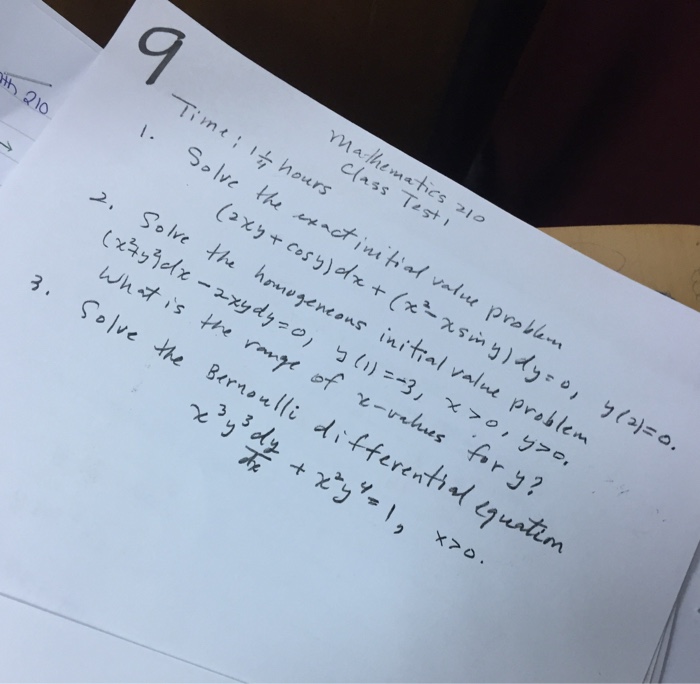



Solved Solve The Exact Initial Value Problem 2xy Cos Y Chegg Com



X Y 2 Dx 2xy Dy 0 Sarthaks Econnect Largest Online Education Community
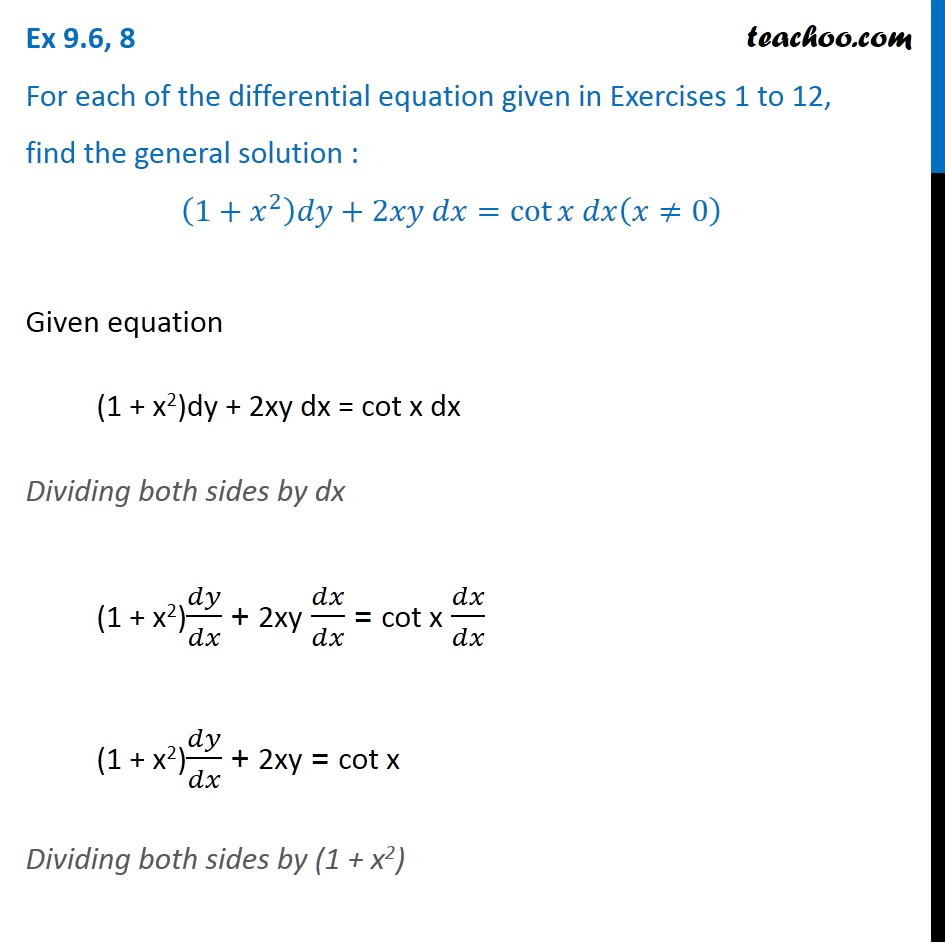



Ex 9 6 8 Find General Solution 1 X2 Dy 2xy Dx Ex 9 6
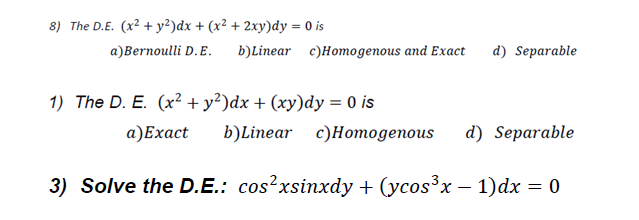



Solved The De X 2 Y 2 Dx X 2 2xy Dy 0 Is Chegg Com
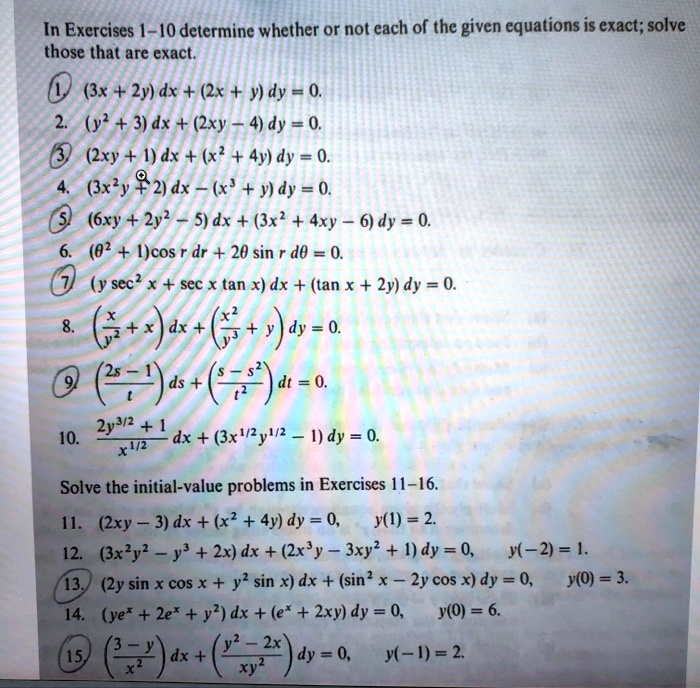



Solved In Exercises 0 Determine Whether Or Note Each Of The Given Equations Is Exact Solve Those That Are Exact 3x 2y Dx 2x Y Dy 0 Y




Engineering Mathematics Notes




2 Pdf Pdf Equations Elementary Mathematics
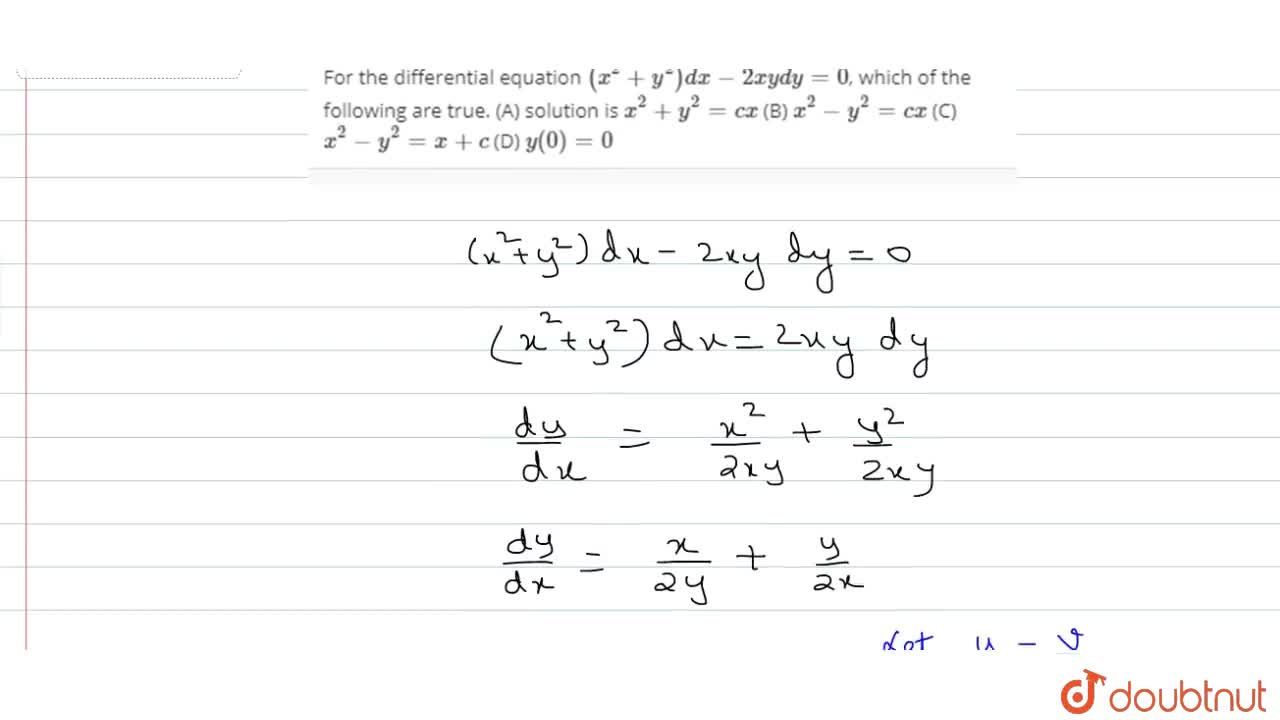



For The Differential Equation X 2 Y 2 Dx 2xy Dy 0 Which Of The Following Are True A Solution Is X 2 Y 2 Cx B X 2 Y 2 Cx C X 2 Y 2 X C D Y 0 0




Ex 9 5 4 Show Homogeneous X2 Y2 Dx 2xy Dy 0 Ex 9 5
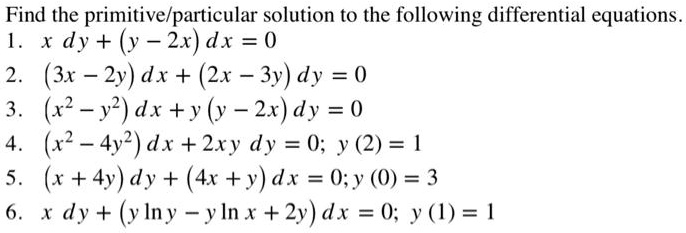



Solved Find The Primitive Particular Solution To The Following Differential Equations X Dy Y 2x Dx 0 2 3x Zy Dx 2x 3y Dy 0 X Y



How To Solve Math X Y 2 Dx 2xy Dy 0 Quora
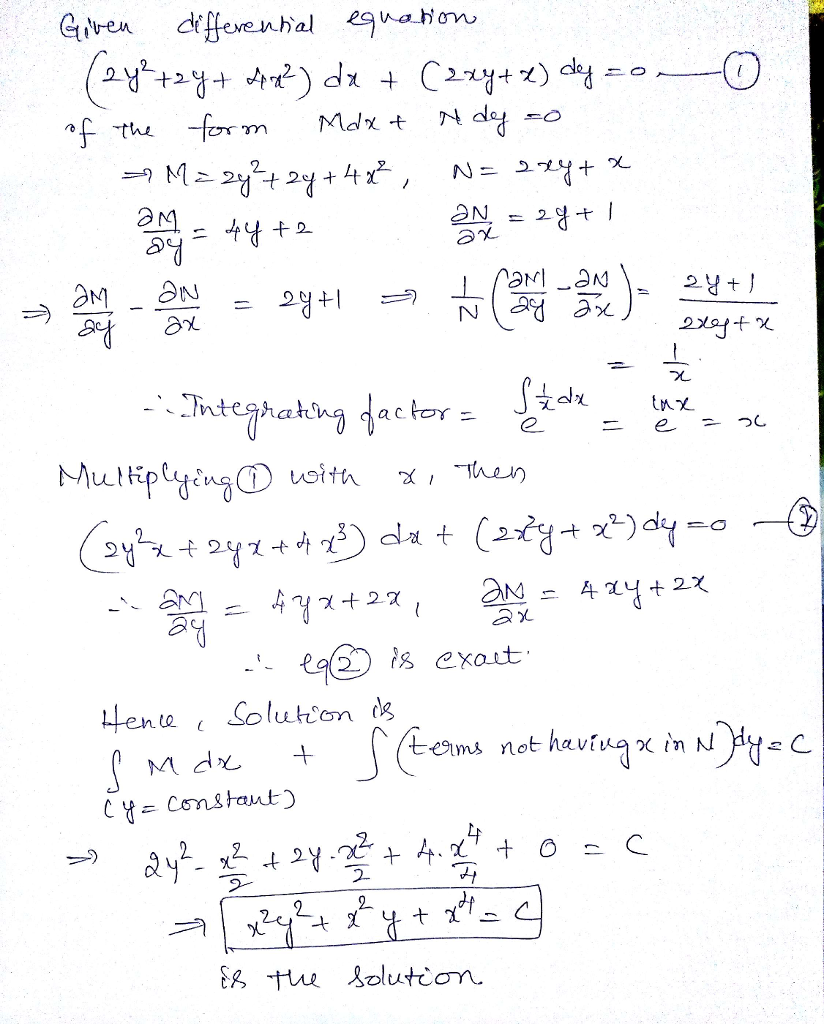



Solve The Following Ordinary Differential Equation 2y 2 2y 4x 2 Dx 2xy X Dy 0 Wegglab



What Is The Solution Of 2 2xy 4y 3 Dx X 2 2 Dy 0 With An Answer Of Y 2 X 2 1 C X 2 4 Quora




Solve The Differential Equation X 2 Y 2 Dx 2xy Dy 0 Given That Y 1 When X 1
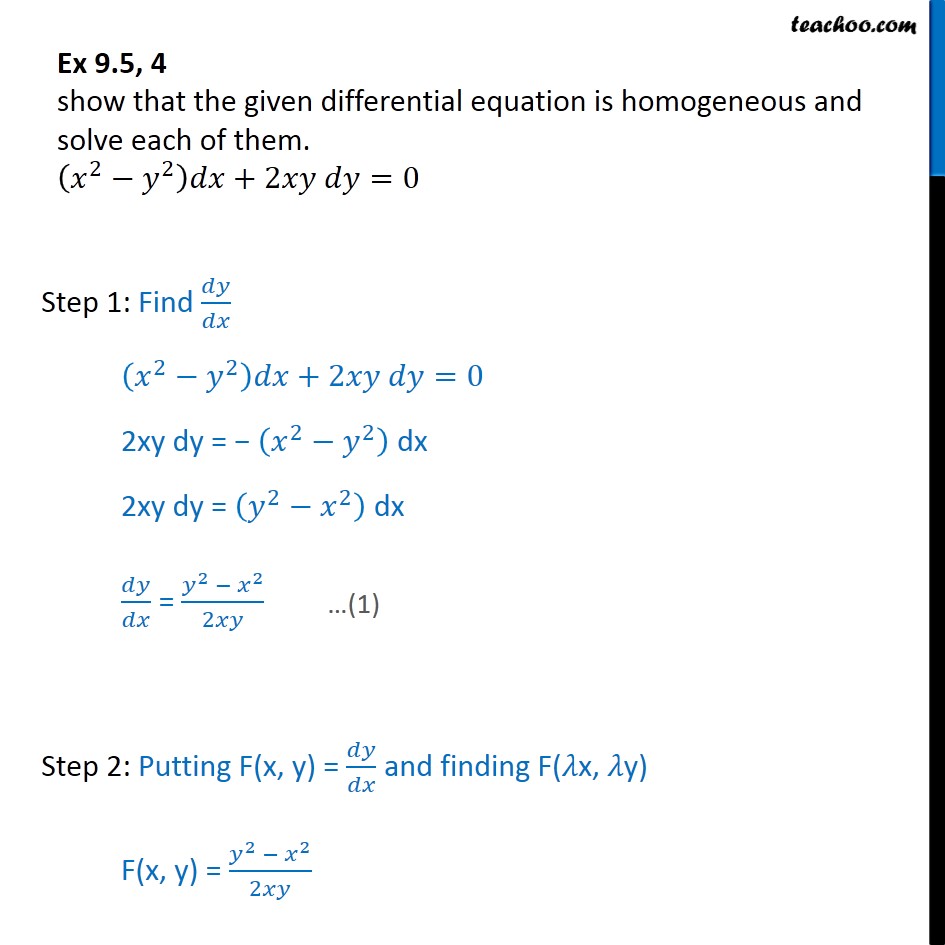



Ex 9 5 4 Show Homogeneous X2 Y2 Dx 2xy Dy 0 Ex 9 5




Find The Particular Solution Of The Differentialequation 1 Y 2 1 Log X Dx 2xy Dy 0 Giventhat Y 0 When X 1 Snapsolve




Solving Differential Equation 2xy Dy Dx Y 2 X 2 0 Youtube




Solve The Differential Equation X 2 Y 2 Dx 2xy Dy 0



How To Solve This Differential Equation 2xydy X 2 Y 2 1 Dx 0 Quora




7 X 2 Y 2 Dx X 2 2xy Dy 0 Ecuaciones Exactas Alexander Estrada Youtube
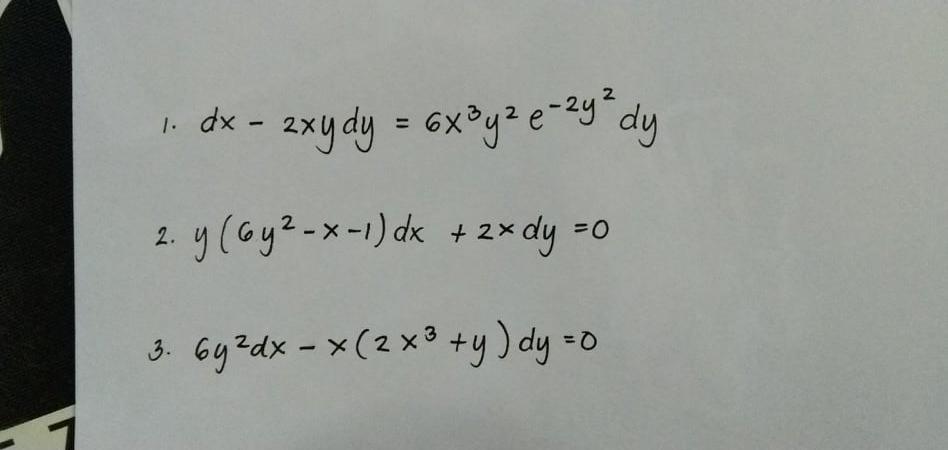



Solved 1 Dx 2xy Dy 6x3y E 24 Dy 2 Y 6y2 X 1 Dx Chegg Com



Solve The Differential Equation X 2 1 Dy Dx 2xy 1 X 2 1 Sarthaks Econnect Largest Online Education Community



Fuild Wur Wulout Ol Zlf X 2 Y 2 Dx 2xy Dy 0 Snapsolve



Solve The Following Differential Equation 1 X 2 Dy Dx 2xy 1 1 X 2 Given Y 0 When X 1 Sarthaks Econnect Largest Online Education Community




Solve X2 Y2 Dx 2xy Dy Brainly In



Solved Solve The Following Ordinary Differential Equation Course Hero




2xy Dy Dx X 2 3y 2 Youtube



How To Solve Math X Y 2 Dx 2xy Dy 0 Quora




Engineering Mathematics Notes
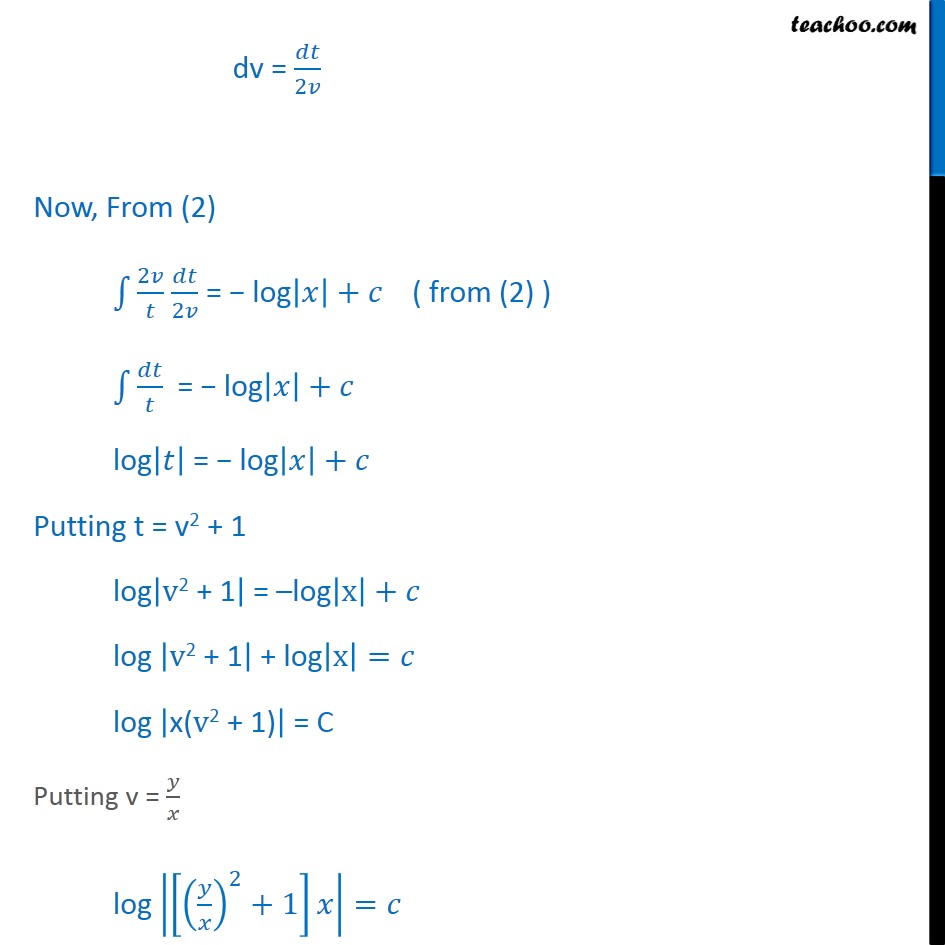



Ex 9 5 4 Show Homogeneous X2 Y2 Dx 2xy Dy 0 Ex 9 5
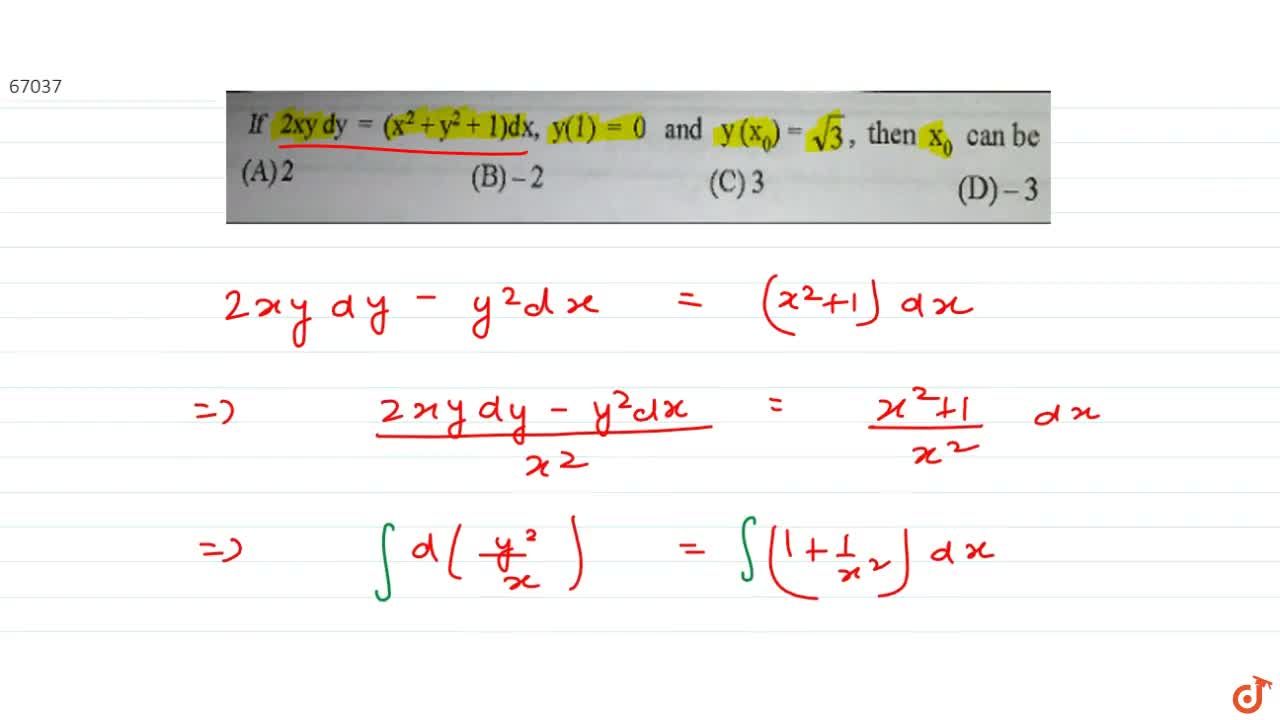



If 2xydy X 2 Y 2 1 Dx Y 1 0 And Y X0 Sqrt3 Then X0 Can Be




Engineering Mathematics Notes



Solve The Following Differential Equation X2 Y2 Dx 2xy Dy 0 Given That Y 1 When X 1 Or Solve The Following Differential Equation If Y 1 When X 1 Maths Topperlearning Com 237hoo



1




For The Differential Equation X 2 Y 2 Dx 2xy Dy 0 Which Of The Following Are True Youtube
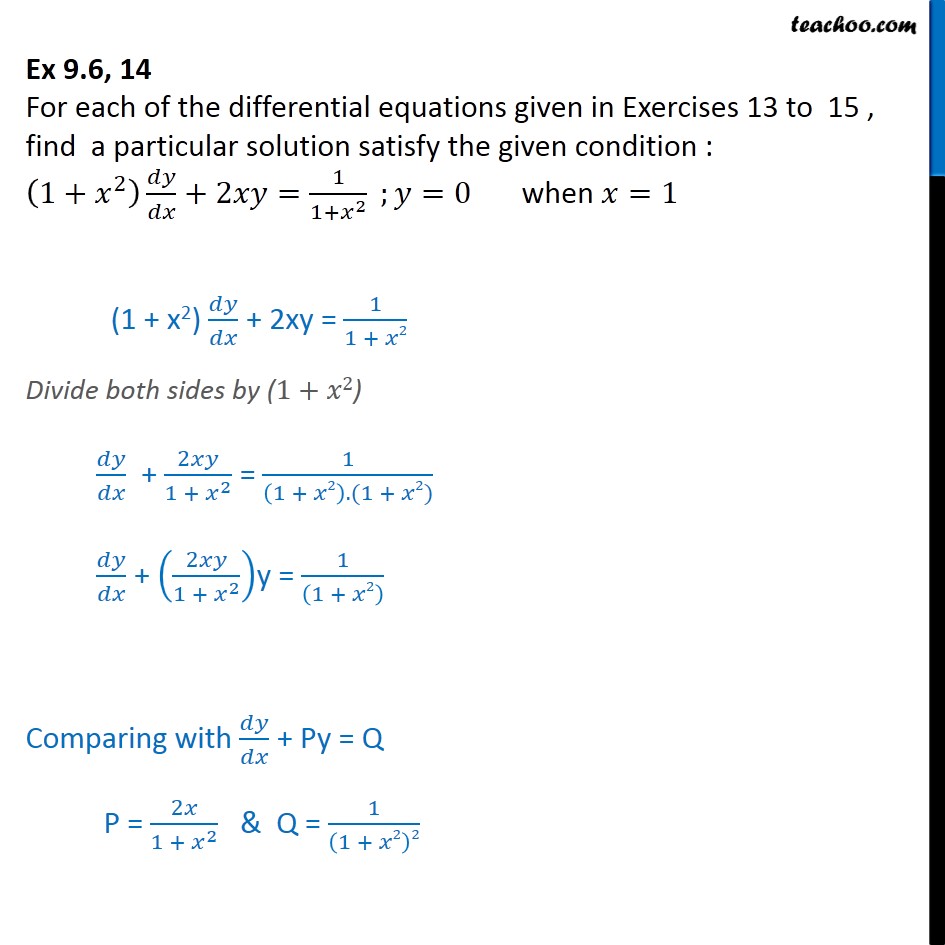



Ex 9 6 14 Find Particular Solution 1 X2 Dy Dx 2xy




Ex 9 5 15 Class 12 Find Solution 2xy Y 2 2x 2 Dy Dx 0 When



2xy Y 2 2x 2 Dy Dx 0 Y 2 When X 1 Sarthaks Econnect Largest Online Education Community
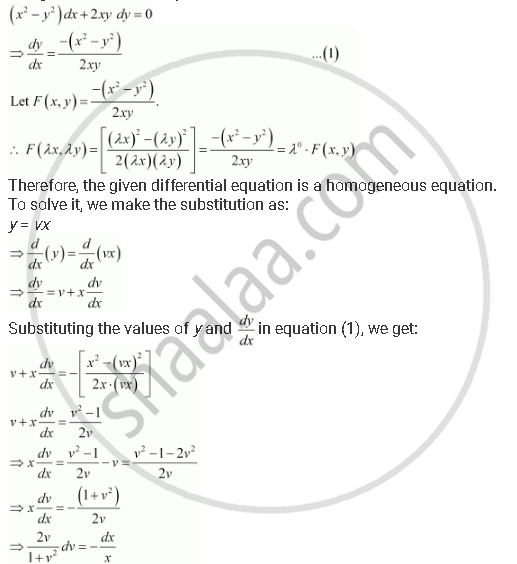



Show That The Given Differential Equation Is Homogeneous And Solve Each Of Them X2 Y2 Dx 2xy Dy 0 Mathematics Shaalaa Com




Math 432 Hw 2 5 Solutions Frostburg




First Order Differential Equation Docsity




In The Following Show That The Given Differential Equation Is Homogeneous And Solve Each Of Them 1 X 2 Xy Dy X 2 Y 2 Dx 2 Y X Yx
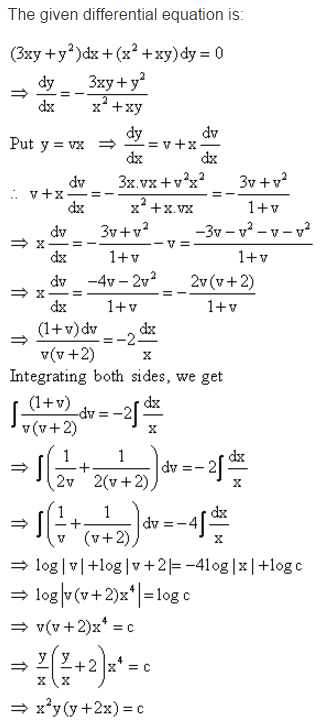



Find The Particular Solution Of Given Differential Equation 3xy Y 2 Dx X 2 Xy Dy 0 At X 1 Y 1 Maths Topperlearning Com D1ksg633




Solve X 2 Y 2 Dx 2xy Dy 0




Solved The General Solution Of The Ode X2 Y2 Dx 2xy Dy Chegg Com




4 X2 Y2 1 Dx 2xy Dy 0solve The Differential Equation Of Not Exact Homogneous Brainly In


